Arts & Entertainment
Pride march brings gayborhood boom years back to Chelsea
‘We will continue what began 50 years ago, to bring us closer to equality’
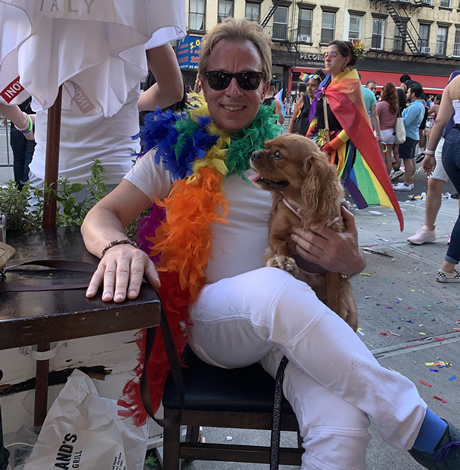

From long lines to get into gay bars to crowded sex shop aisles to sidewalks dense with drag queens, daddies, dykes, twinks, tweakers, and wide-eyed tourists, Manhattan’s onetime ground zero of gayness had a déjà vu moment that lasted all day long, and well into the next, when Chelsea served as the end point of June 30’s NYC Pride March.
Cheered on by an estimated four million spectators, the March proceeded down Fifth Avenue from its East 26th Street kick-off, went past the Stonewall Inn during its Greenwich Village phase, then made its way up Seventh Avenue, concluding in the heart of Chelsea.
Twelve hours and 32 minutes after its noon start time, over 150,000 marchers had crossed the West 23rd Street finish line, from which point many remained in the area to congregate on stoops, hold impromptu dance-offs, and scoop up Stonewall 50 T-shirts hawked by vendors who turned side streets closed to vehicular traffic into open-air markets.
Some strolled, many strutted, down Eighth Avenue, between West 14th and 23rd Streets—which, at the height of Chelsea’s gay glory, housed dozens of queer-centric businesses, including gay lifestyle retail mecca Rainbows & Triangles, and The Big Cup—a java joint that served the community as, depending on your pop culture touchstone, the “Cheers” bar, Central Perk, Starbucks, or a brick and mortar Grindr, where hookup prospects were never more than 20 feet away.
By dawn, the streets were clean, and little evidence of the previous day’s record-setting revelry remained, save for the Pride-hued confetti that promises to linger, like Christmas tree needles, as a reminder of the season that came and went.
For longtime locals, the Pride March recalled an era when Chelsea was the reigning queen of NYC gay nightlife, retail, and residency.
“I consider the heyday of the Chelsea gay vibe to be when I moved here [in 1996] to until around 2005,” says 49-year-old Stephen Charles Lincoln, creator/proprietor of The Protein Bakery, a neighborhood fixture since 1999.
WorldPride, Lincoln notes, “was a fantastic reminder” of the heyday, “with the streets filled with gay people of every race, age, and sexual preference.”
While the onetime group fitness director at the predominantly gay David Barton Gym strongly disavows the notion that Chelsea is “over” as a gay neighborhood (“I’m still here,” he quips), Lincoln concedes it “has definitely diluted over the past 10 years.”
Unlike Splash, Rawhide, and View, not every gay bar from Chelsea’s golden age has been consigned to history.
Sixty-year-old Derek Danton, “an out business owner for 40 years, 20 with the Eagle NYC,” says there is “really nothing in my history to compare to the events of the last two weeks. Locals and visitors alike were just happy to be alive, happy to be free to express themselves, unconditionally.”
Located at West 28th Street and 11th Avenue since 2001, and one of the only Manhattan gay bars with a roof deck, the Eagle is set to mark its 50th anniversary next year.
“In its storied history,” Danton notes, “the size of the crowds at the Eagle, because of WorldPride, is unprecedented… It is astonishing to realize that so many thousands of visitors from all around the world know and love the Eagle, and that tradition is still valued.”
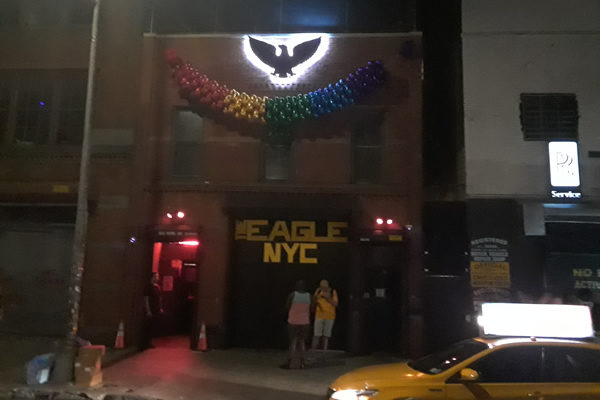
Andrew Rai, 38, a lifelong resident of Chelsea, talks of vanishing tradition, noting he feels the March “retains some of the rapidly fading cultural authenticity” of his neighborhood.
“Chelsea,” Rai says, “was very gay when I was growing up, was very vibrant, in terms of the variety of personalities, genders, and thoughts. Now, it’s becoming very homogenized. But this really harkened me back to when Chelsea was truly diverse. It makes me feel that there’s still some element of it, somewhere, that lives.”
Fifty-one-year-old Craig M. de Thomas, a partner in the Midtown-based commercial and residential title insurance company, Insignia National Title Agency, recalls “telling my grandmother I was gay when I was 25 years of age,” and often traveling “from upstate New York, to indulge in the gay life that is offered here. I have fond memories of going to the many Chelsea clubs, bars, and restaurants, truly enjoying life and always feeling safe and accepted. Seeing men openly sharing affection and being their authentic selves in public was incredible to me. I wanted to be part of that, which is why I moved here 11 years ago.”
Over the last few years, de Thomas observes, “We have seen Chelsea shift, as many gay business owners and residents have moved north [to Hell’s Kitchen].” This year’s Pride celebration, he says, “brought with it a much-needed injection of gayness to Chelsea. It was lovely to walk around over the weekend, both day and evening, and feel the gay energy again, to see restaurants, bars, and shops filled with life and happiness. It was a vibe that is reminiscent of days gone by.”
Calling the Pride March the “culmination of seeds sown decades ago, many of which were planted here in Chelsea by residents who still reside here,” de Thomas sees the neighborhood’s gay liberation greenhouse role as an ongoing one, noting, “We are the fruits” of those seeds and, as such, “will continue what began 50 years ago, to bring us closer to equality” while celebrating “the beauty and power of diversity.”
That Chelsea diversity has legs—four of them, in the form of many locals for whom Sunday’s Parade March intersected with the daily duties of dog ownership.
Chicago-to-NYC transplant Abbey Stolle spoke with the Blade while walking her Shih Tzu, Donna, in close proximity to their residence at 21st Street and Seventh Avenue, where one of the event’s green-shirted volunteers held a sign letting March participants know they were two blocks from the route’s end.
“People want to feel joy. They want to feel love,” she says, of the neighborhood’s sudden population explosion. “I’ve been out here all day. No one I know living here has ever complained [about the crowds brought by the March], and I have a mixed bag in my building—young, old, gay, straight, trans.”
Detroit-born Stolle, 37, spoke with this 52-year-old reporter about his having grown up during the height of the AIDS crisis, and put her own experience within the context of “my era, Matthew Shepard, that fear of coming out in the ’90s. I was a raver for 15 years. Gay men took me under their wing.”
As “a straight white woman,” Stolle notes, “I guess I feel a bit inferior on a day like today. This is a weighted year. These are people,” Stolle said, of the Stonewall-era faces in the March and on the streets, “who’ve lived through so much, who are still living here.”
Clarifying her use of that charged word, Stolle says she did not invoke inferiority “in a negative way. It’s just, it’s not my day. What are my woes compared to some of the strife these people are going through? But I’m a woman, so I get that taste, that sprinkle.”
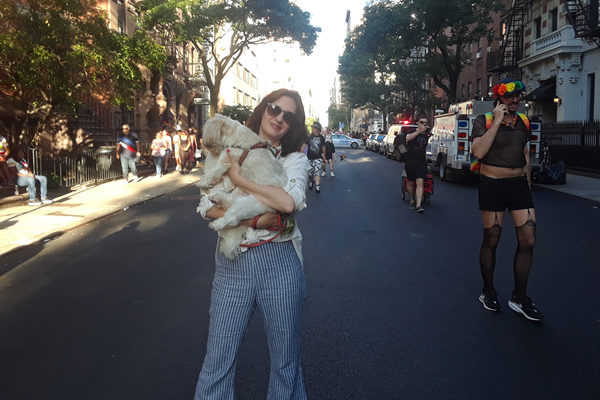
Having watched the day’s events from a table outside Cafe Champignon (Seventh Avenue between West 21st and 22nd Streets), de Thomas recalls, “I stated to my darling friends, gay and straight, as we were sitting in the midst of millions of celebrants, ‘I absolutely love that this is our normal. Isn’t it fantastic?’ ”

a&e features
Local, last-minute holiday gift ideas
Celebrate the season while supporting area businesses
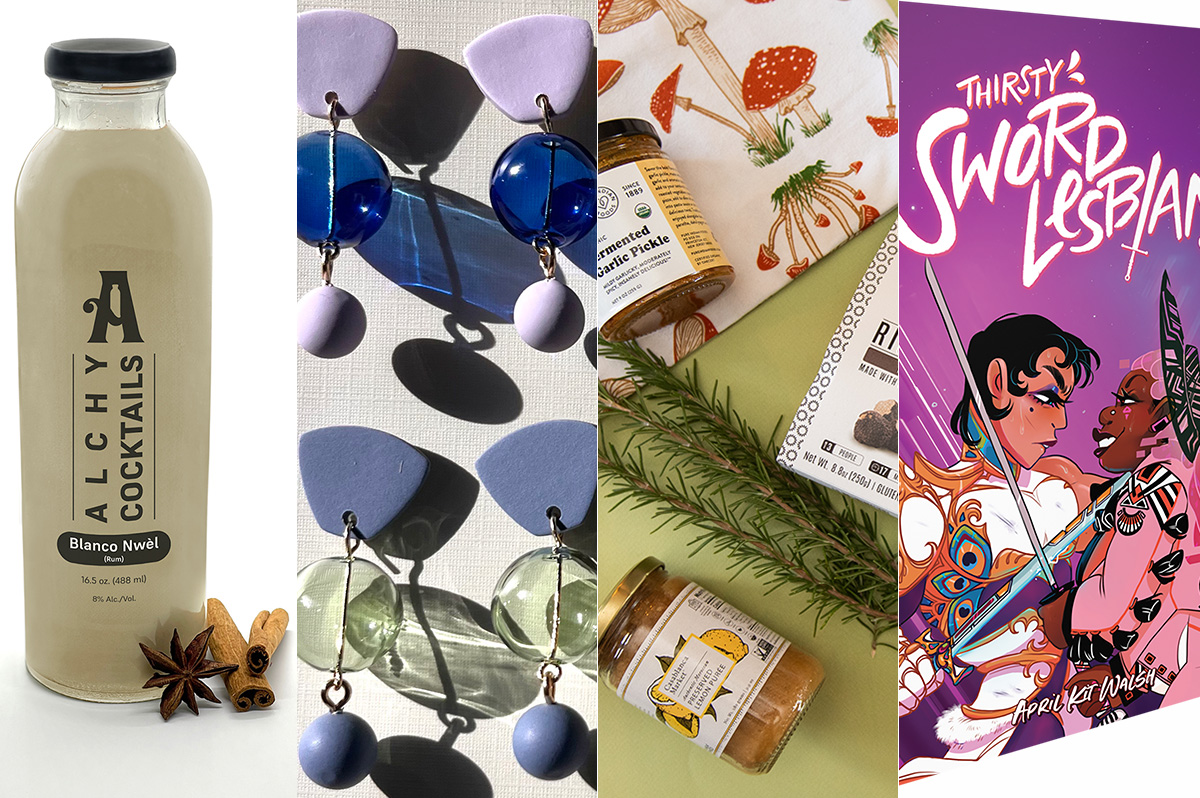
The DowntownDC Holiday Market is bustling. Union Station is decked out with its annual Christmas tree. Washingtonians have wrapped their houses and apartment balconies with festive lights and holiday decorations. The holiday season is here. And with stockings to fill and empty space under the tree, Washington’s local shops and artists have plenty to offer.
Show your LGBTQ and D.C. pride with the Washington Blade’s annual holiday gift guide.
To embrace the holiday buzz: The Blanco Nwèl cocktail from Alchy Cocktails. This Caribbean eggnog is one of Alchy Cocktail’s seasonal holiday cocktails. The flavor profile is similar to coquito, a traditional Puerto Rican Christmas drink with a coconut base. As a queer and Caribbean-owned business, Alchy Cocktails has been based out of Washington since 2021. Blanco Nwèl is available in both cocktail ($24) and mocktail ($12) online and at a variety of holiday markets, including the Tingey Plaza Holiday Market, the Flea Market at Eastern Market, Union Station’s Main Hall Holiday Market, and more. ($24)
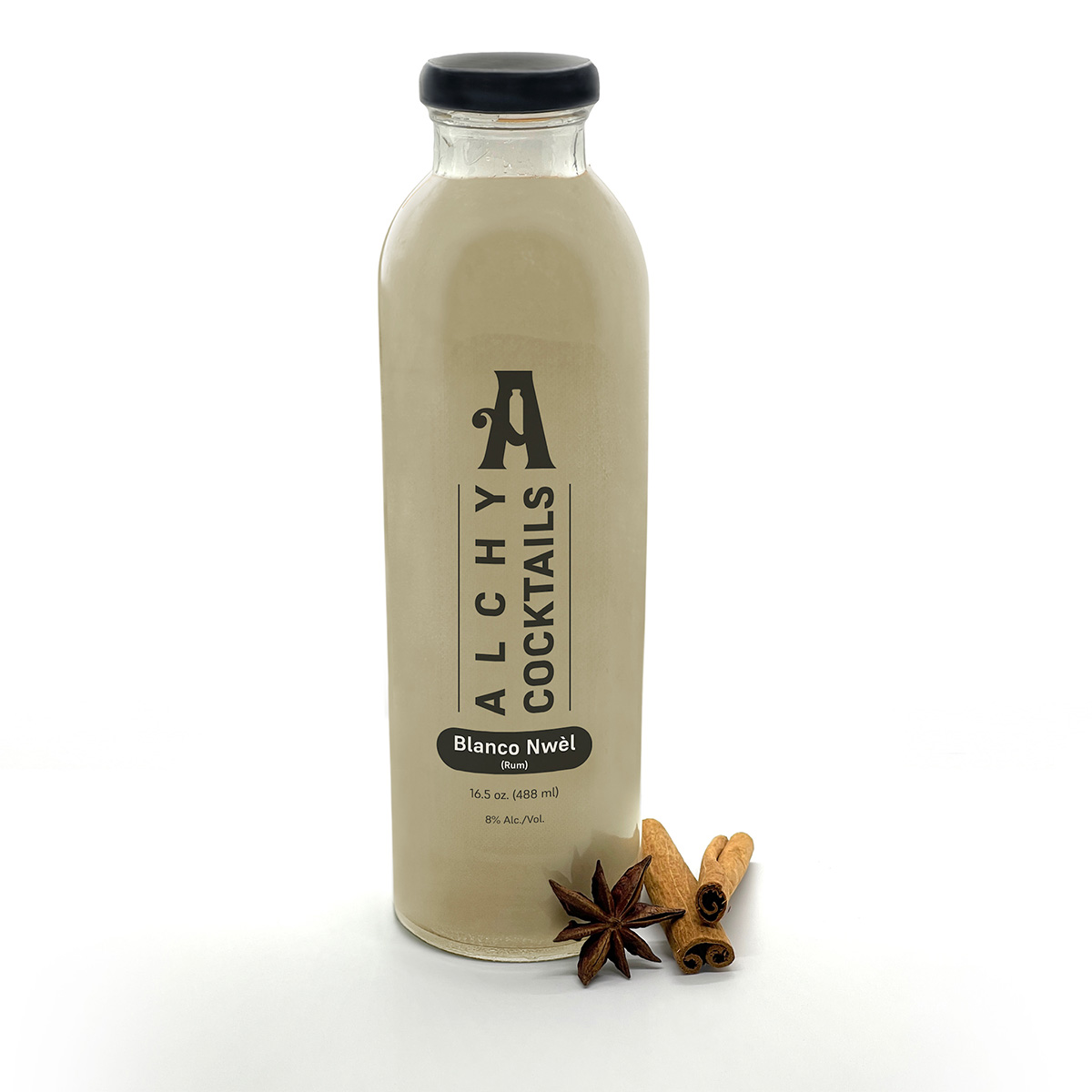
A spicy bite: Gordy’s Cajun Okra from Salt and Sundry. These spicy, tangy pickles pull on Southern Cajun-style flavors, packing a punch with paprika, cayenne, and more. Gordy’s is an LGBTQ-owned and Washington-based brand, making this gift an opportunity to support a local LGBTQ business straight from the jar. This pantry staple is available on Salt & Sundry’s website and at its locations in Union Market, Logan Circle, and its Georgetown holiday pop-up store. ($14)
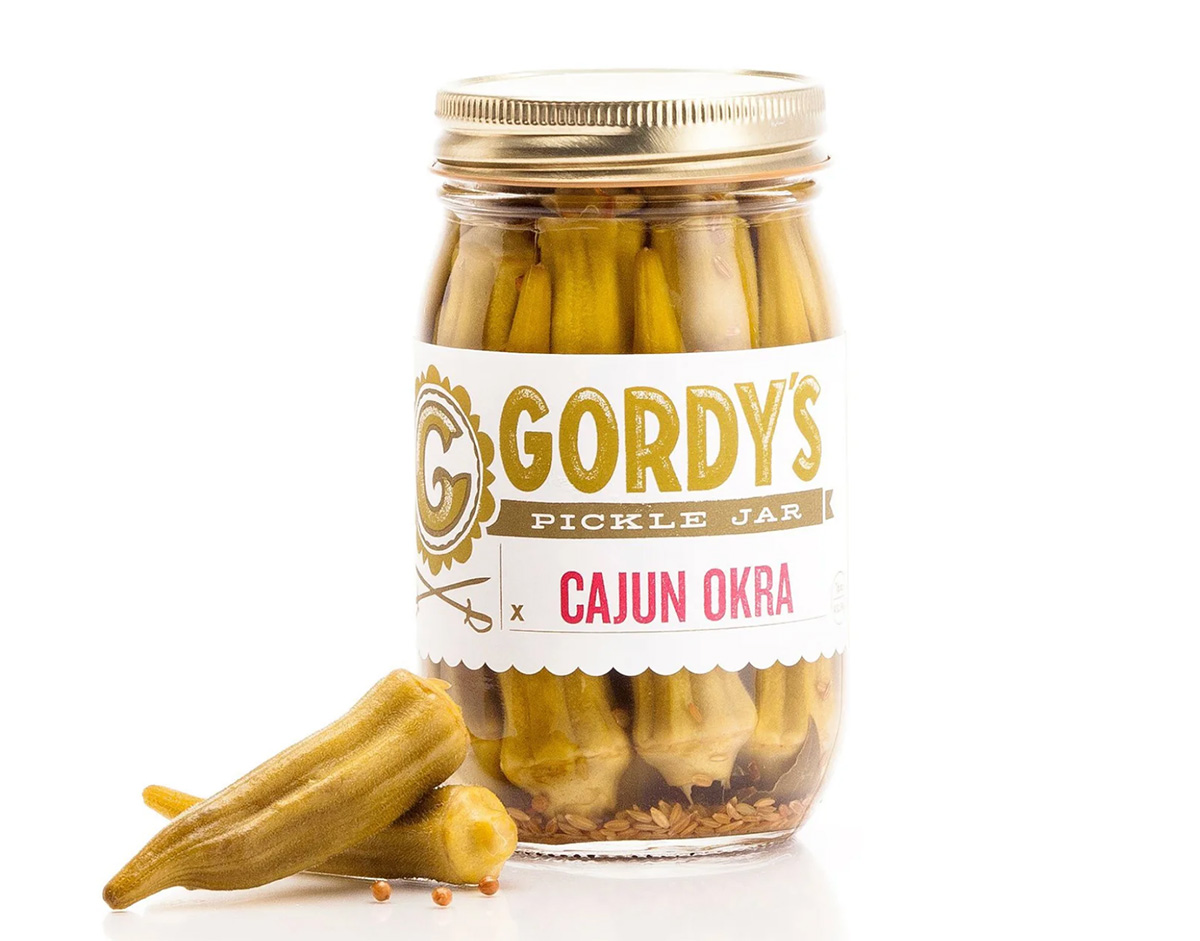

To celebrate Washington pride: The DC Landmark Tote Bag from The Neighborgoods. Native Washingtonians, visitors, friends and family alike will find something to love about this Washington-themed tote bag. Food trucks, the 9:30 Club, the Metro logo and pandas from the National Zoo are just some of the city’s landmarks depicted across the tote in a red, white, and blue color palette. The tote is a part of the DC Landmarks collection, which donates 10 percent of its sales to the American Civil Liberties Union. The Neighborgoods itself is a local, woman-owned business built out of a passion for screen-printing in 2013. The 100 percent cotton canvas tote is for sale online or at the DowntownDC Holiday Market. ($22)
To give friends and family their flowers: The Flowers Bandana from All Very Goods. This 100 percent cotton bandana was designed in Washington and hand printed in India. Its uniqueness comes in being covered with the faces of Black women, representing a “love letter to all women but especially Black women,” according to All Very Goods. The Black woman-owned and operated business, based out of Northwest Washington, has a mission to celebrate diversity and representation through its products. The bandana intends to give Black women their “flowers.” The Flowers bandana is available for purchase online. ($24)
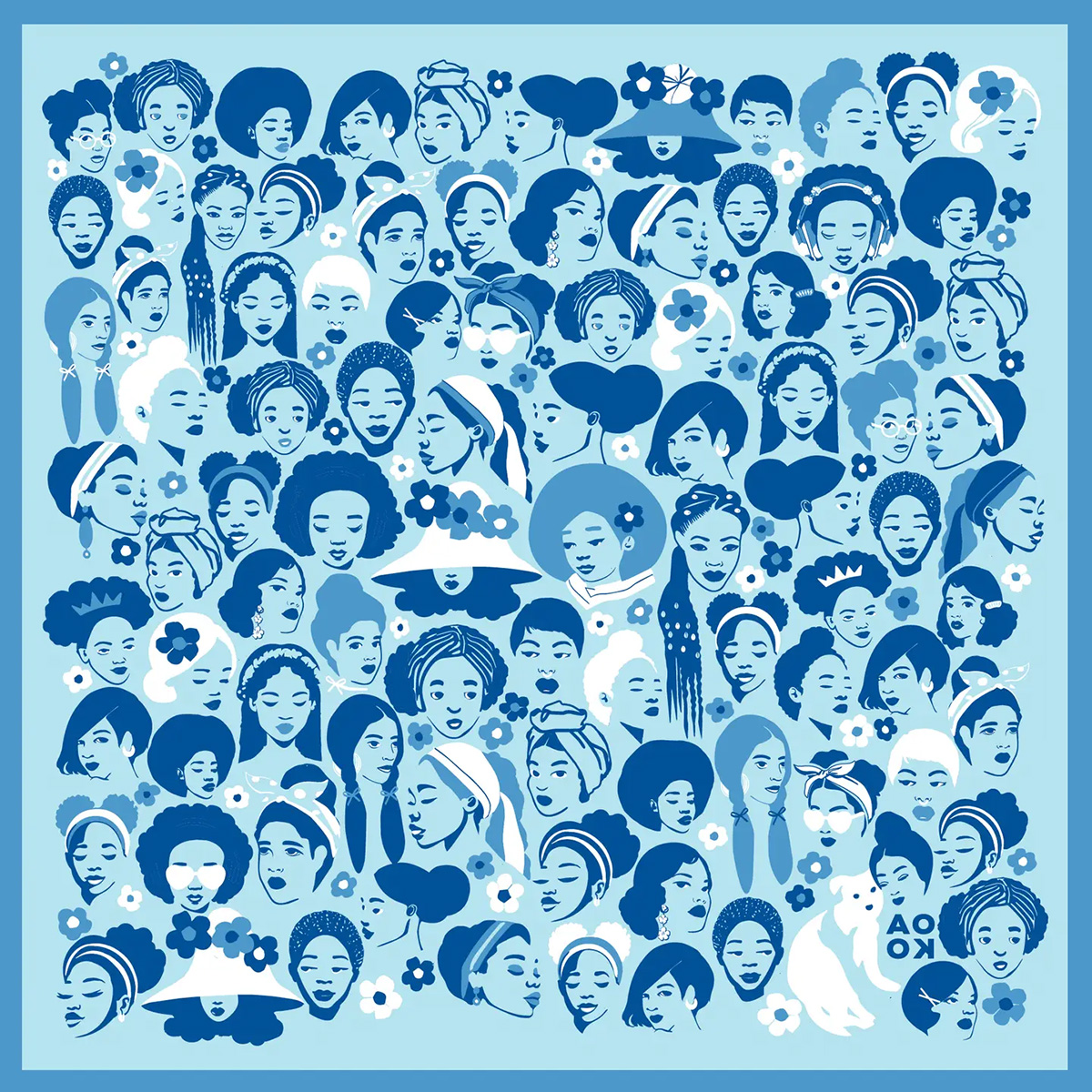
To unlock culinary creativity: The Curious Chef Gift Collection from Each Peach Market. This customizable collection of kitchen oddities — ranging from tinned fish to chili oil — is a quirky gift for the most inventive chefs. The collection is available in a Standard Santa, Extra Goodies and Super Holiday Size for up to $165. The Washington-based market, founded in 2013, permits customers to make the collection special by specifying what unique ingredients are packaged, including products made by local or LGBTQ brands. Each Peach Market offers assembly and pick up in-person at its Mount Pleasant shop and also offers local delivery and nationwide shipping via its website. ($85)
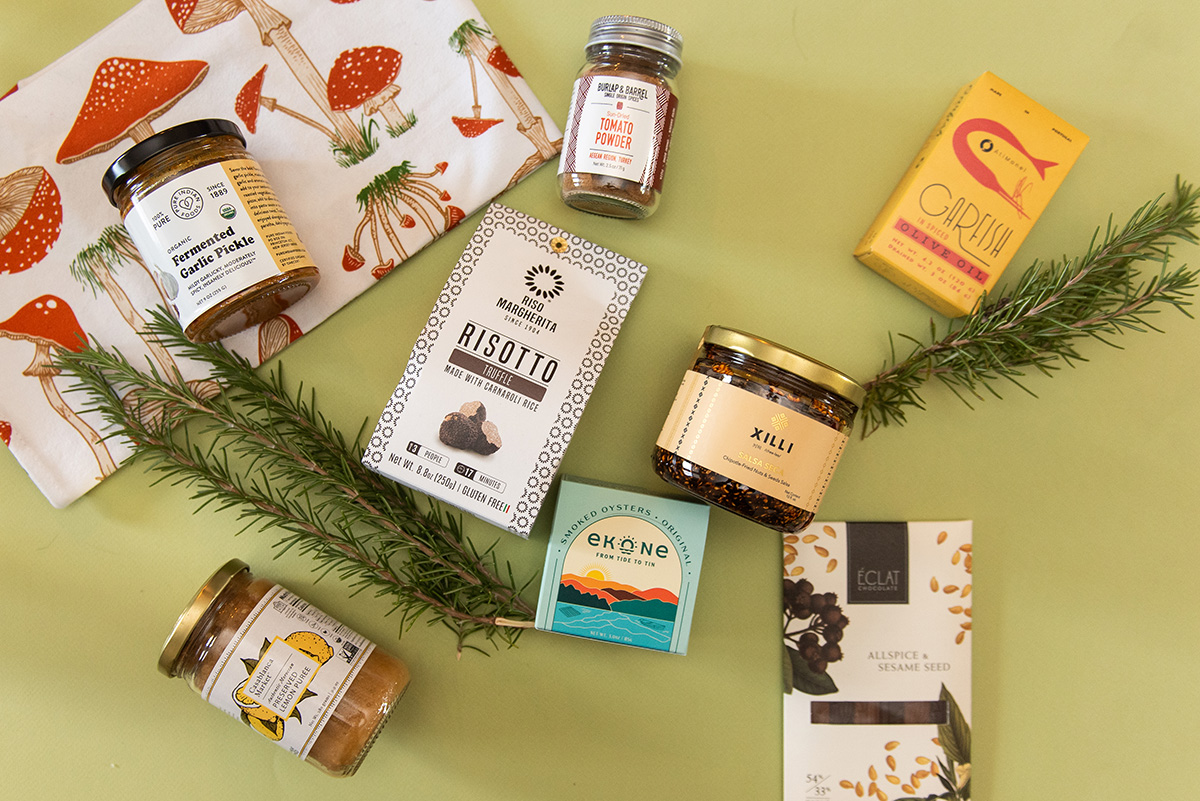
To give a touch of sweetness: The DC Landmark Chocolate Covered Oreo Holiday Cookies from Capital Candy Jar. Wrapped in a festive red bow, this box of nine cookies embraces love for Washington and the holiday season in one. Among the dark and milk chocolate covered cookies are images of the U.S. Capitol, the White House, the Lincoln Memorial, the Jefferson Memorial and festive hollies. The treat, packaged in a Hill East facility just a few blocks from the Capitol, is available for purchase online and at the DowntownDC Holiday Market. ($23.95)
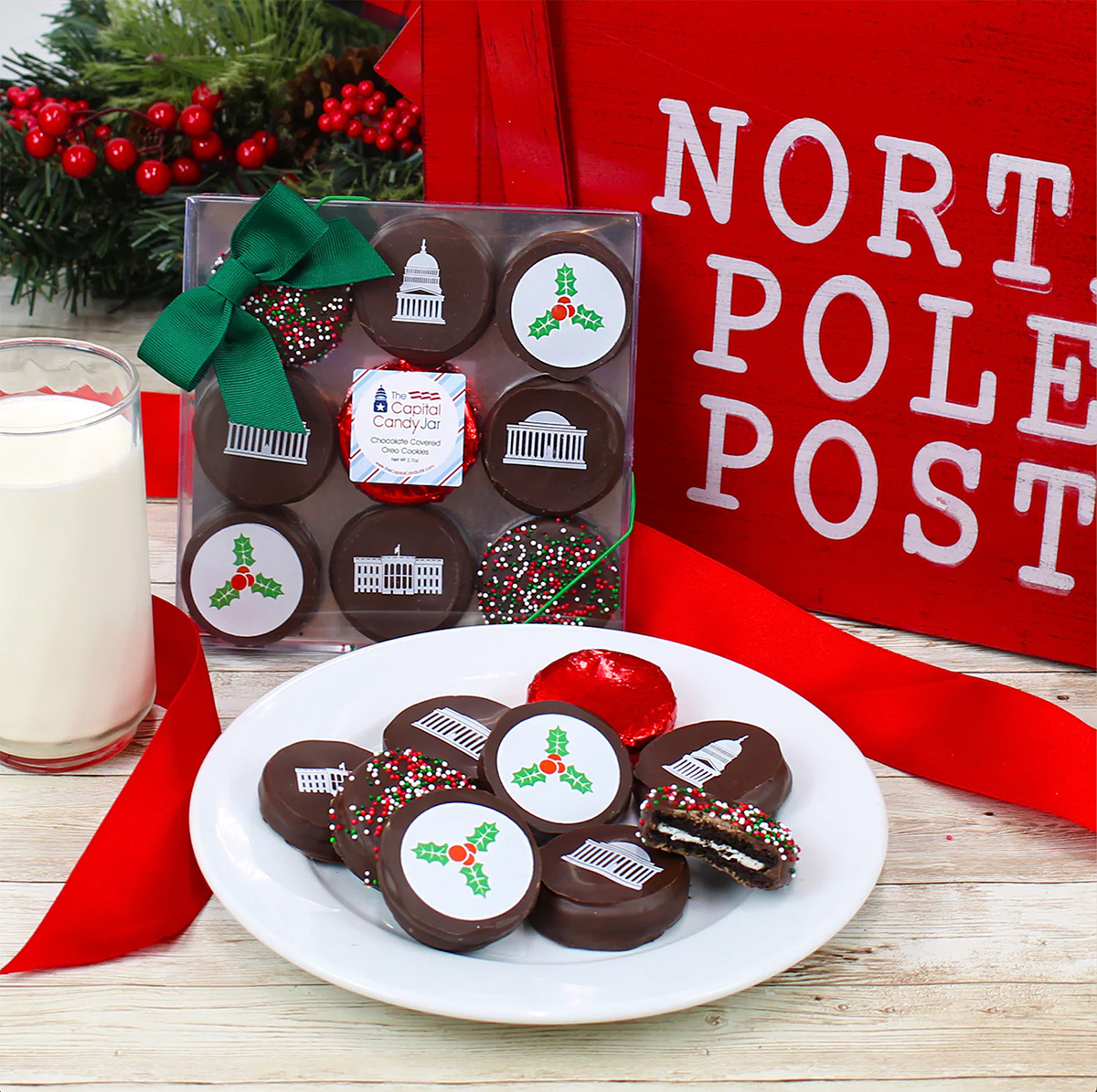
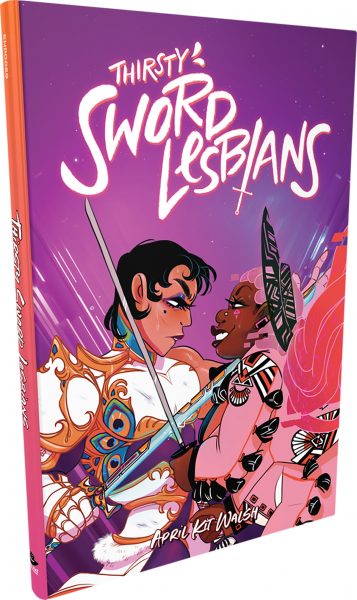
To celebrate queer gaming: Thirsty Sword Lesbians from Labyrinth Games & Puzzles. This roleplaying game embraces lesbian culture by unlocking a world of swords, romance, and battle. Ideal for group settings, the book presents a system of world building and character identities that are best brought to life by creative minds. Labyrinth, which has been a local Washington business for more than 15 years, celebrates non-digital fun through games and puzzles that connect the community. This gift is offered online and at Labyrinth’s Capitol Hill location. ($29.99)
To make a bold statement: The “Resist” T-shirt from Propper Topper. This locally screen-printed black tee features the Washington flag designed within a raised fist, symbolizing both Washington pride, and political resistance. The shirt is made exclusively by Propper Topper, a local Washington business that evolved from a hat shop to a gift store since opening in 1990. The tri-blend unisex shirt is available both for pickup at Propper Topper’s Cathedral Heights location and shipping via the online site. ($32)
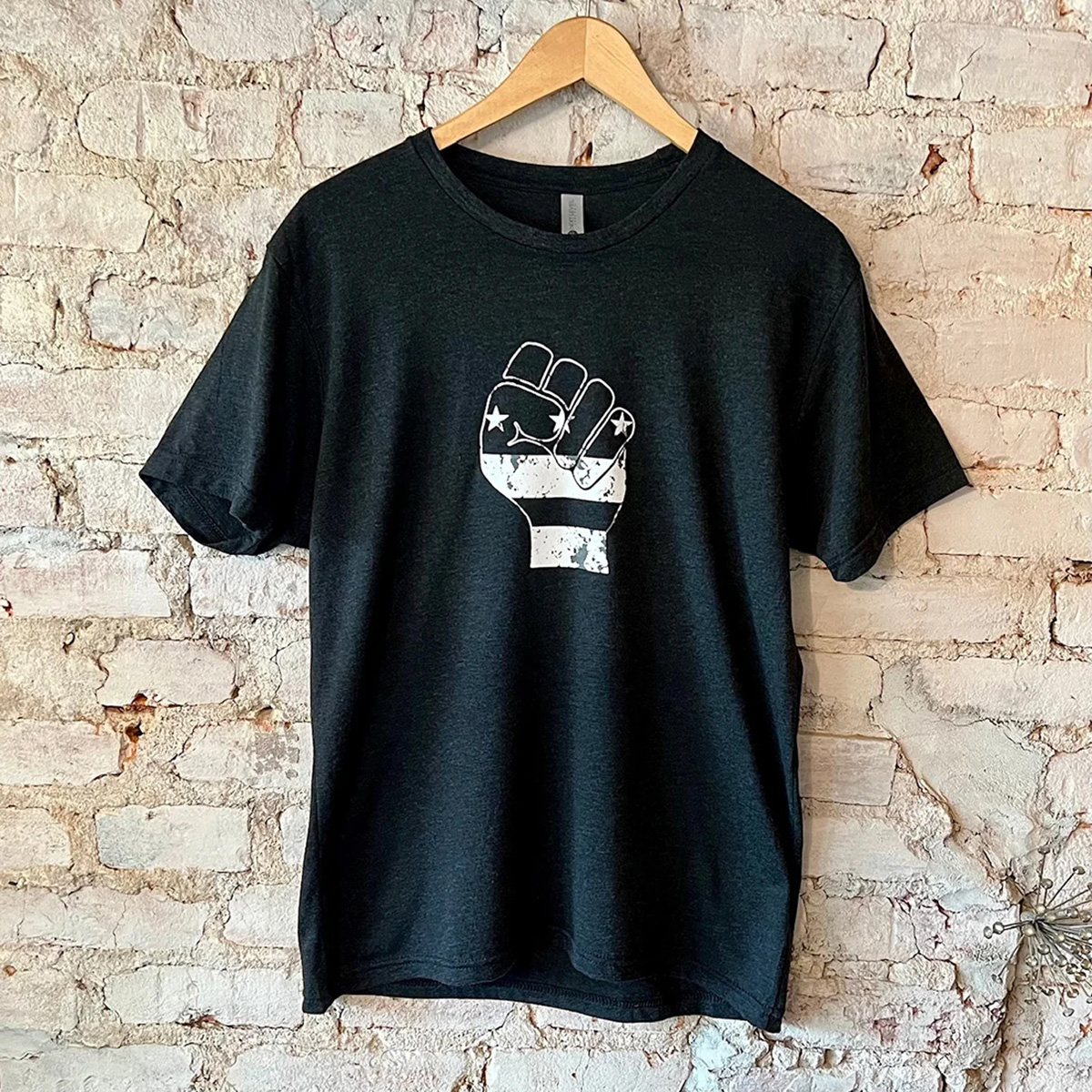
To keep it c(g)lassy: The Glass Ball earrings from Blue Moon Aquarius. Gifting can rarely go wrong when it comes to a new pair of earrings. The unique statement earrings — made of polymer clay, glass, and 18k gold plating over surgical steel — are hand cut, sanded and assembled in Washington, meaning each set is unique. Blue Moon Aquarius, a local brand, is known for its small batch jewelry and home decor designed with clay materials. Available in oxblood, hunter green, lavender, and bluestone color palettes, these earrings are available for purchase on Blue Moon Aquarius’ website and at the DowntownDC Holiday Market. ($48)
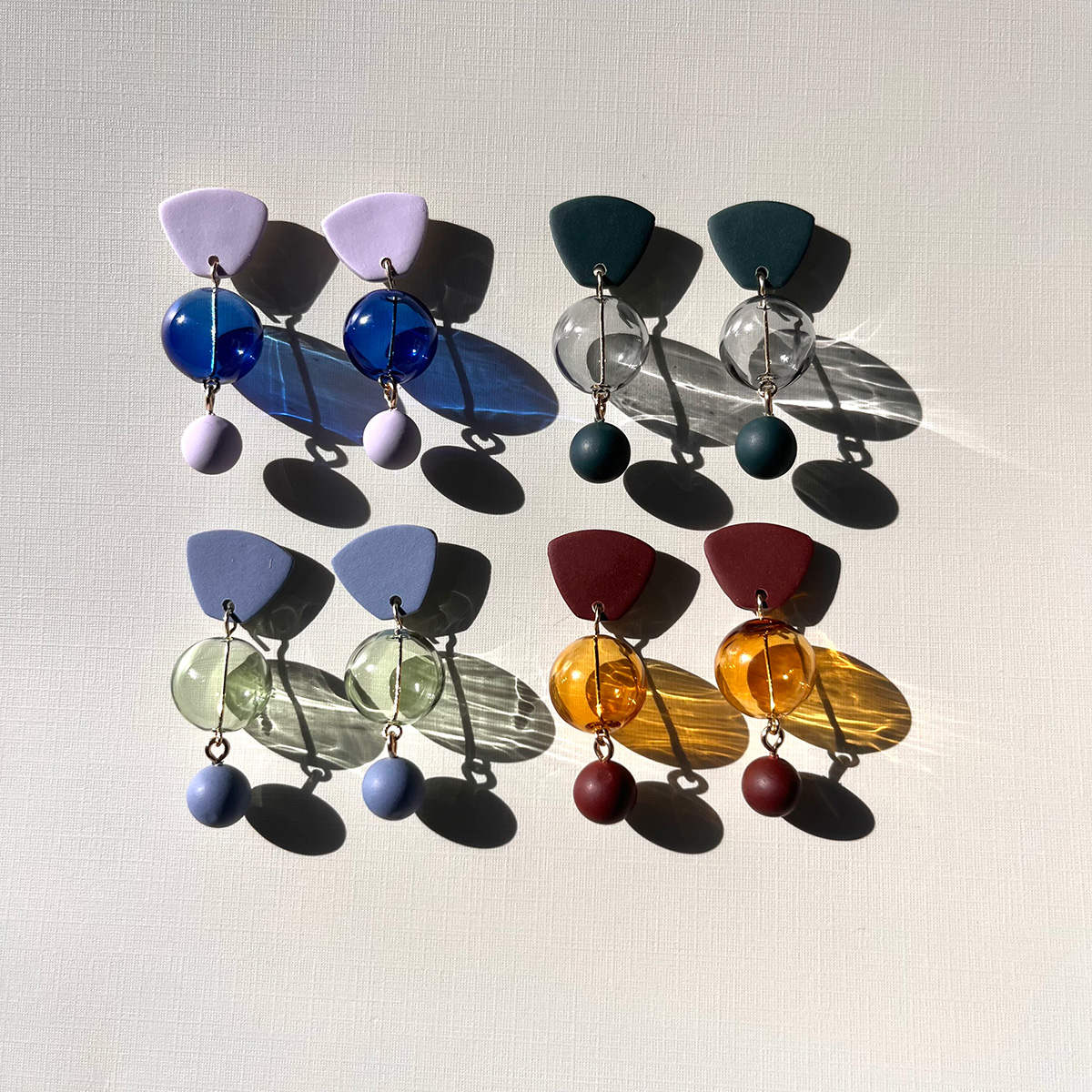
To elevate a holiday tea or charcuterie party: The Honey Flight: Tea Lover’s Selection from BannerBee. This local honey company presents the ideal gift to make cozying up with a cup of tea slightly more special. The Honey Flight contains three types of raw wildflower honey infused with fair trade Ugandan vanilla bean, chai spices, and locally sourced lemon thyme herb. The gift is also an opportunity to uplift a family company based in the Mid-Atlantic that offers all-natural, sustainable products. The flight is available online, at the DowntownDC Holiday Market or at the Arlington Courthouse and Dupont Farmers’ Markets. ($36)

For Baltimore shoppers: If you’re in Charm City, don’t miss Balston Mercantile, opened by a gay couple in June. Their gorgeous shop in the Hampden neighborhood offers an array of unique, upscale finds, from barware and artwork to cookbooks and home decor and more. (849 W. 36th St.)
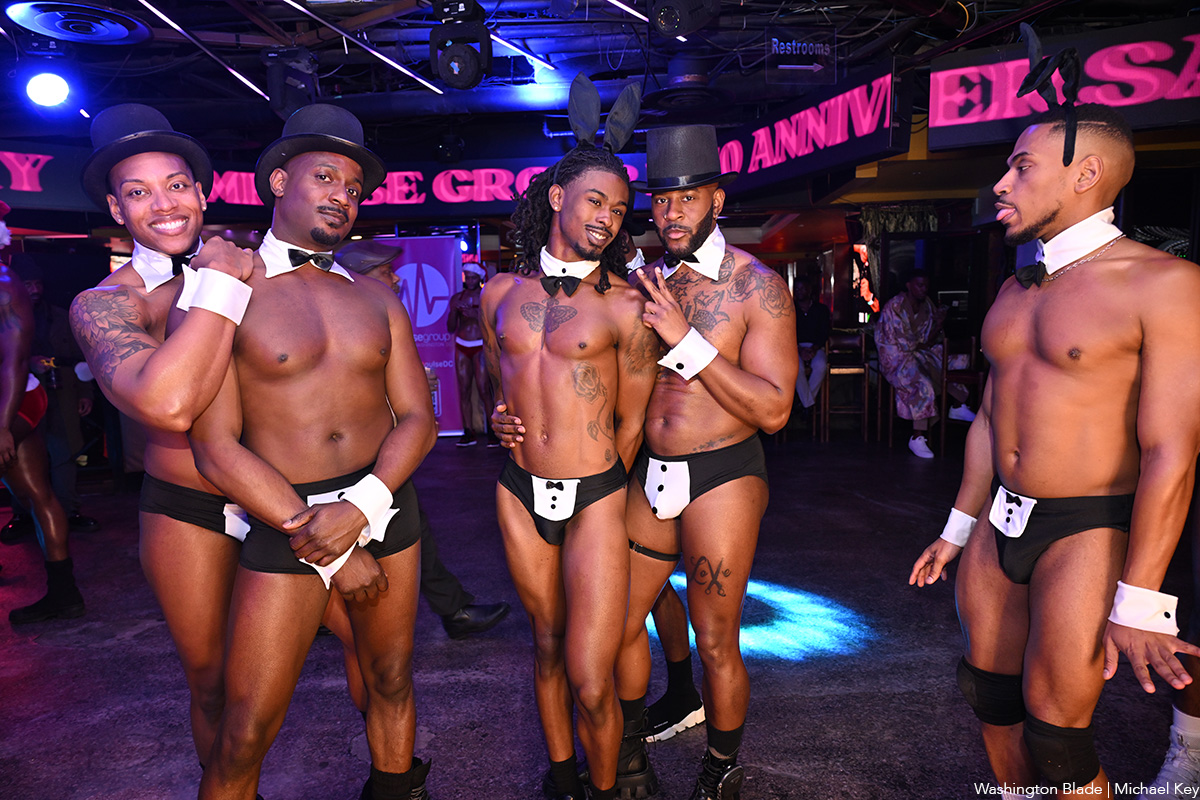
Impulse Group DC held “10’s Across the Board: A Celebration of 10 Years” at Bravo Bravo (1001 Connecticut Ave., N.W.) on Sunday, Dec. 14. Impulse Group DC is a volunteer-led 501(c)(3) and affinity group of AIDS Healthcare Foundation dedicated “to engaging, supporting, and connecting gay men” through culturally relevant health and advocacy work.
(Washington Blade photos by Michael Key)

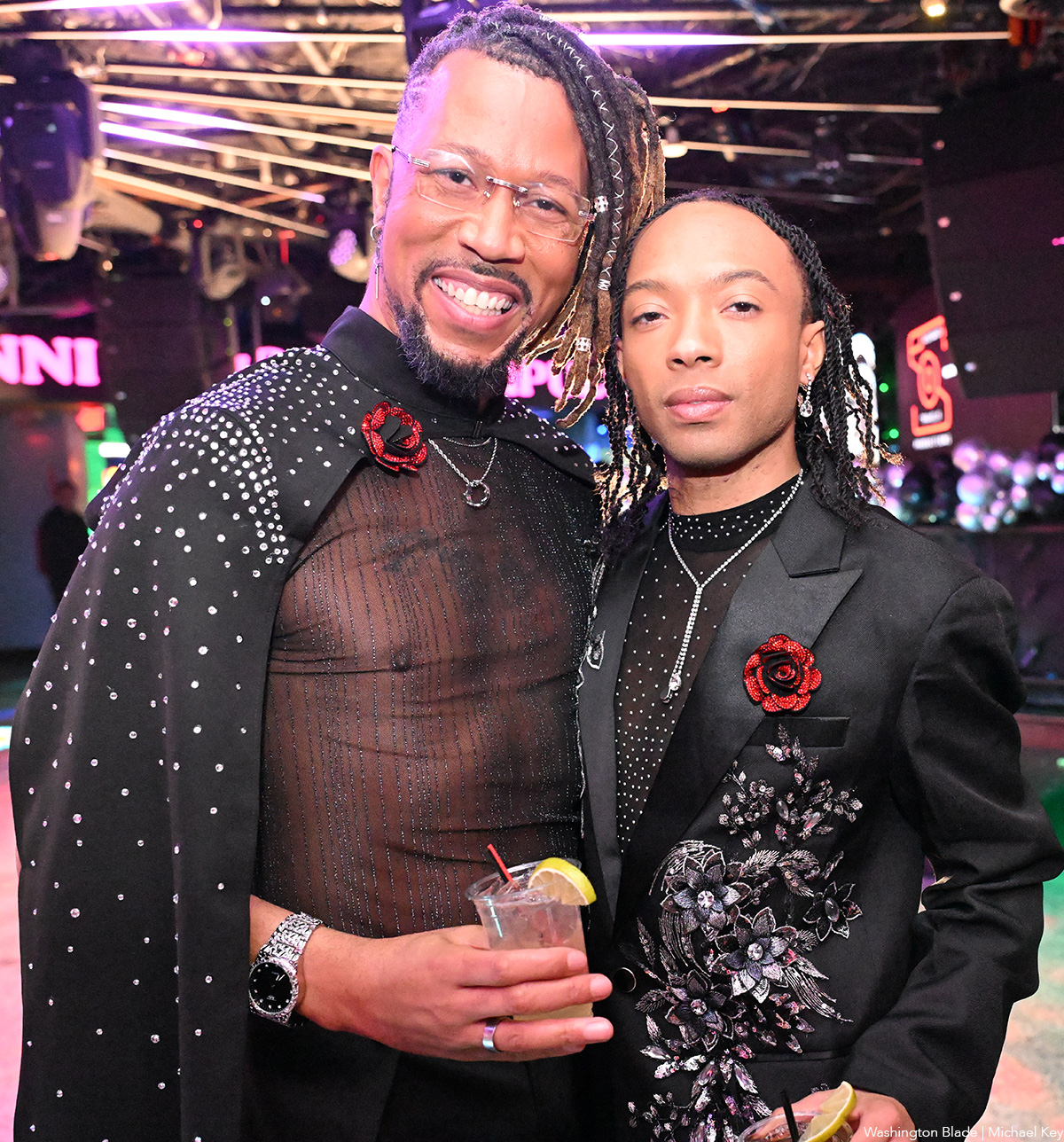
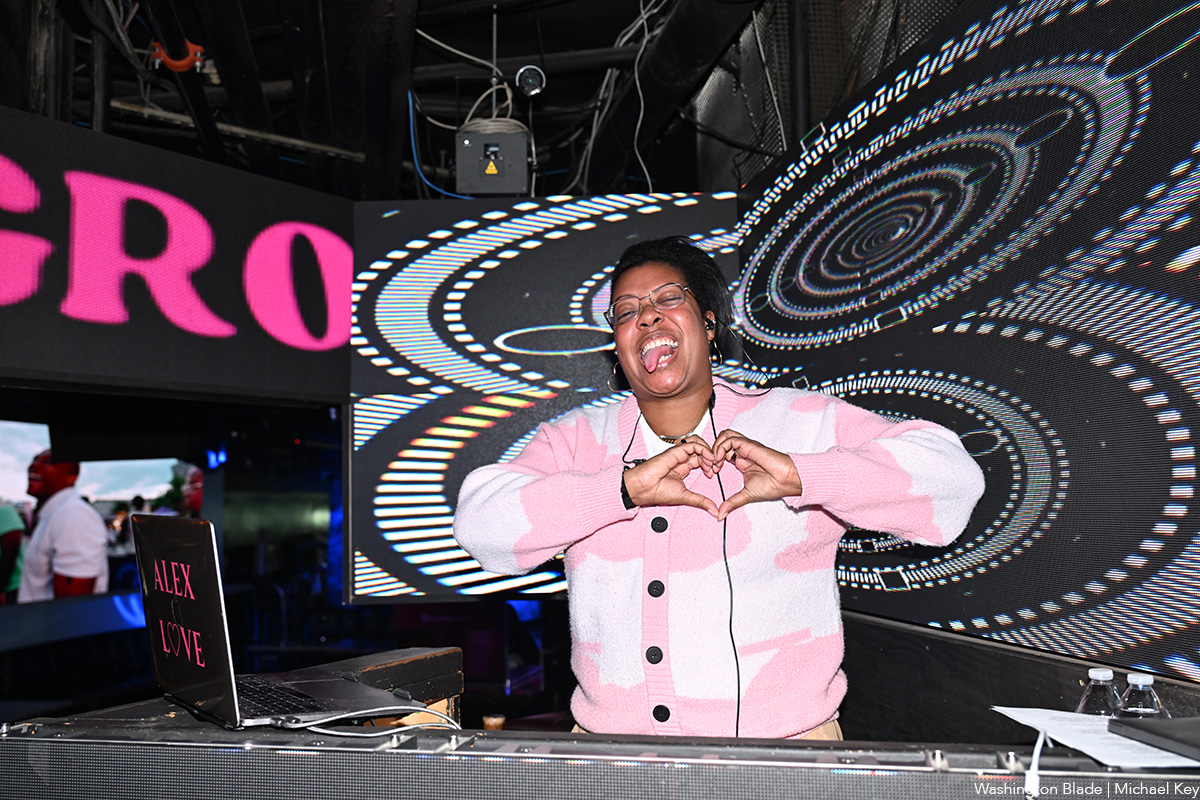
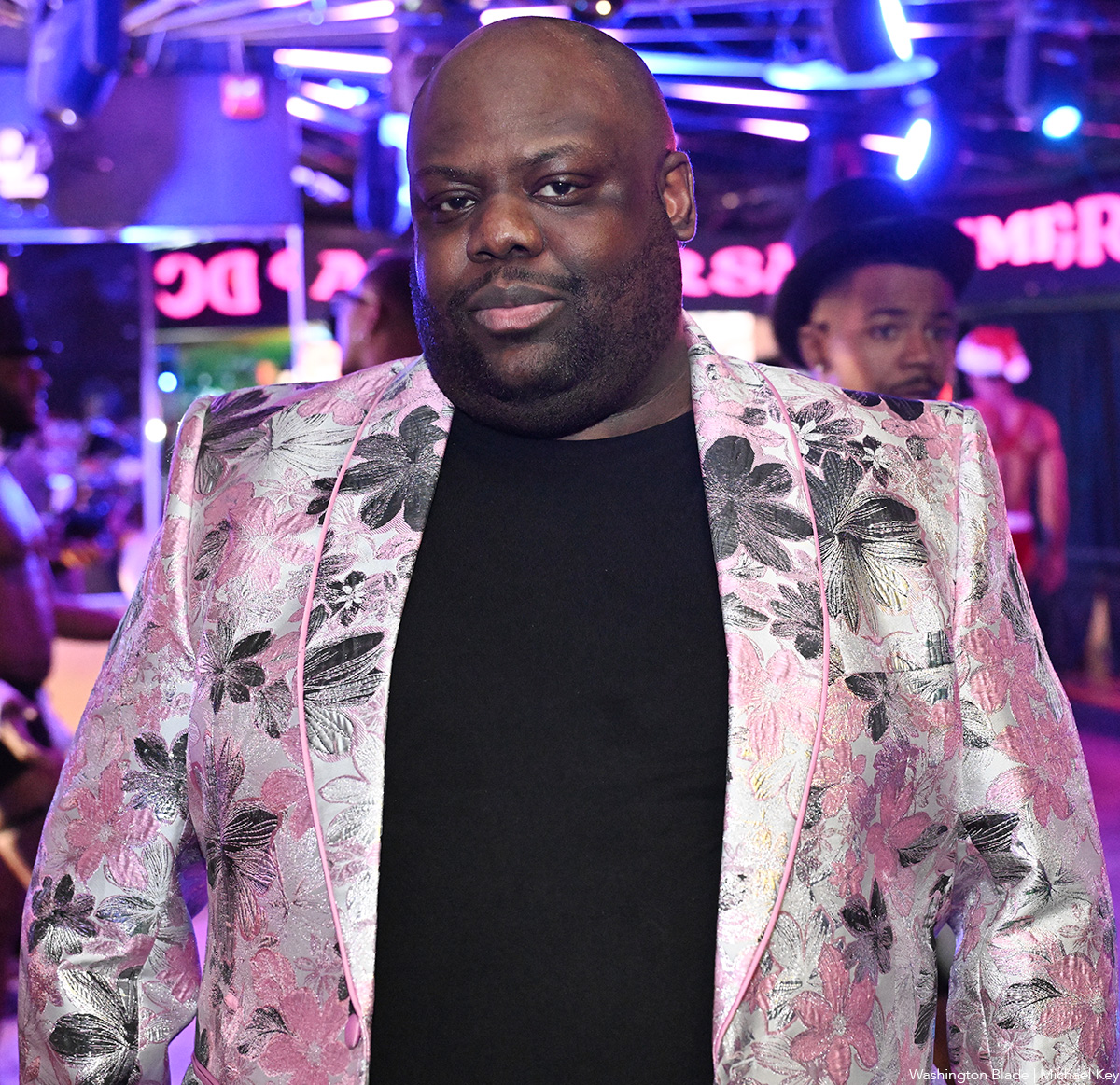
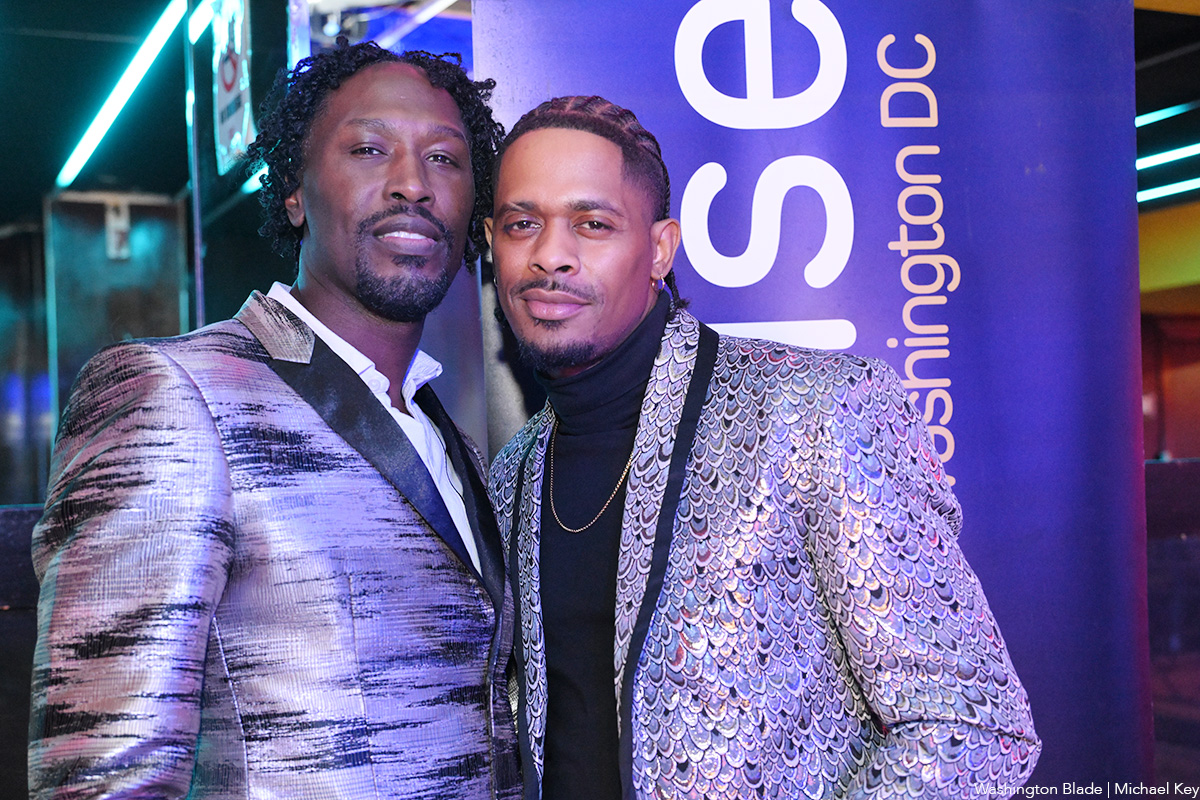
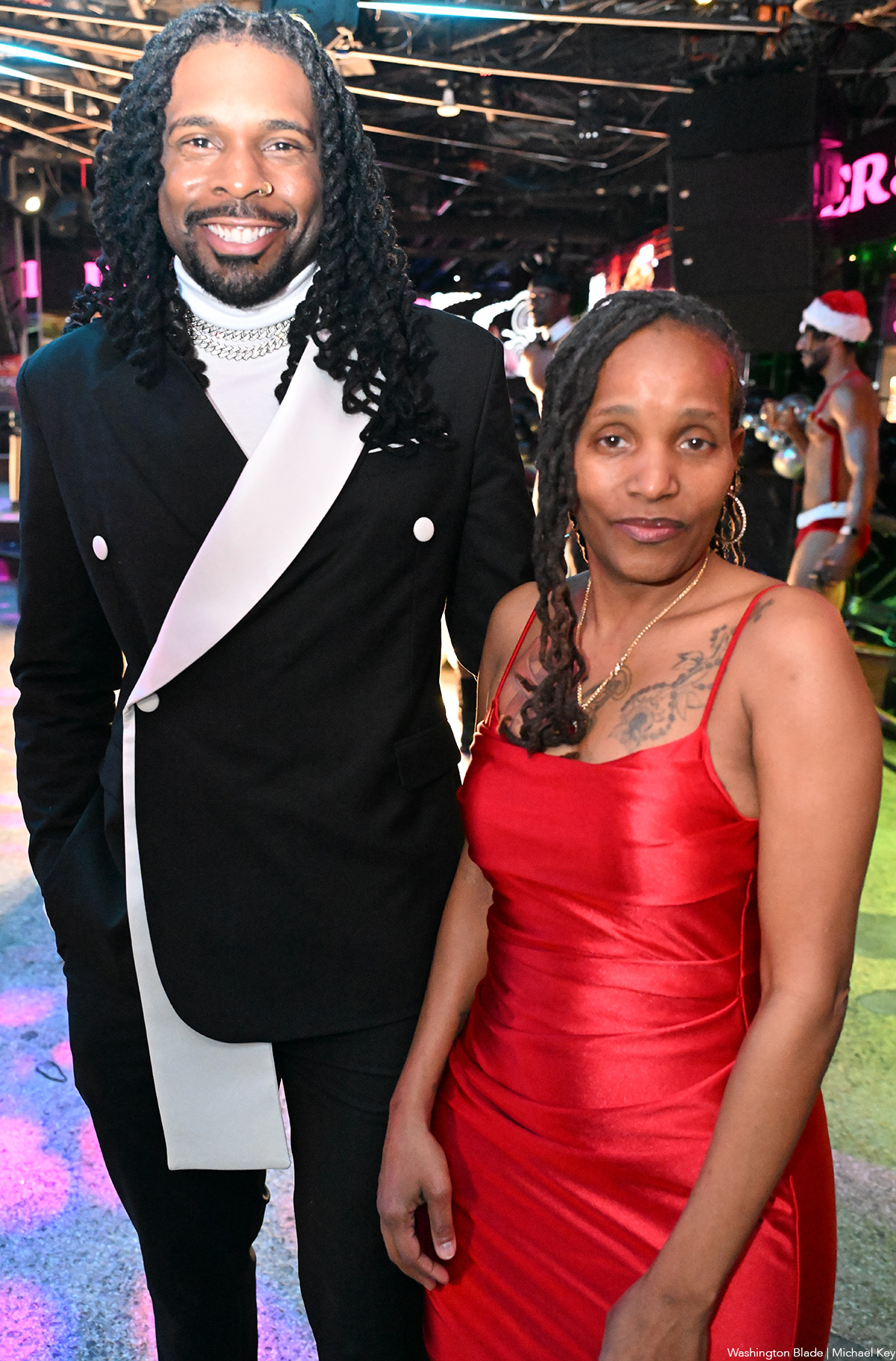
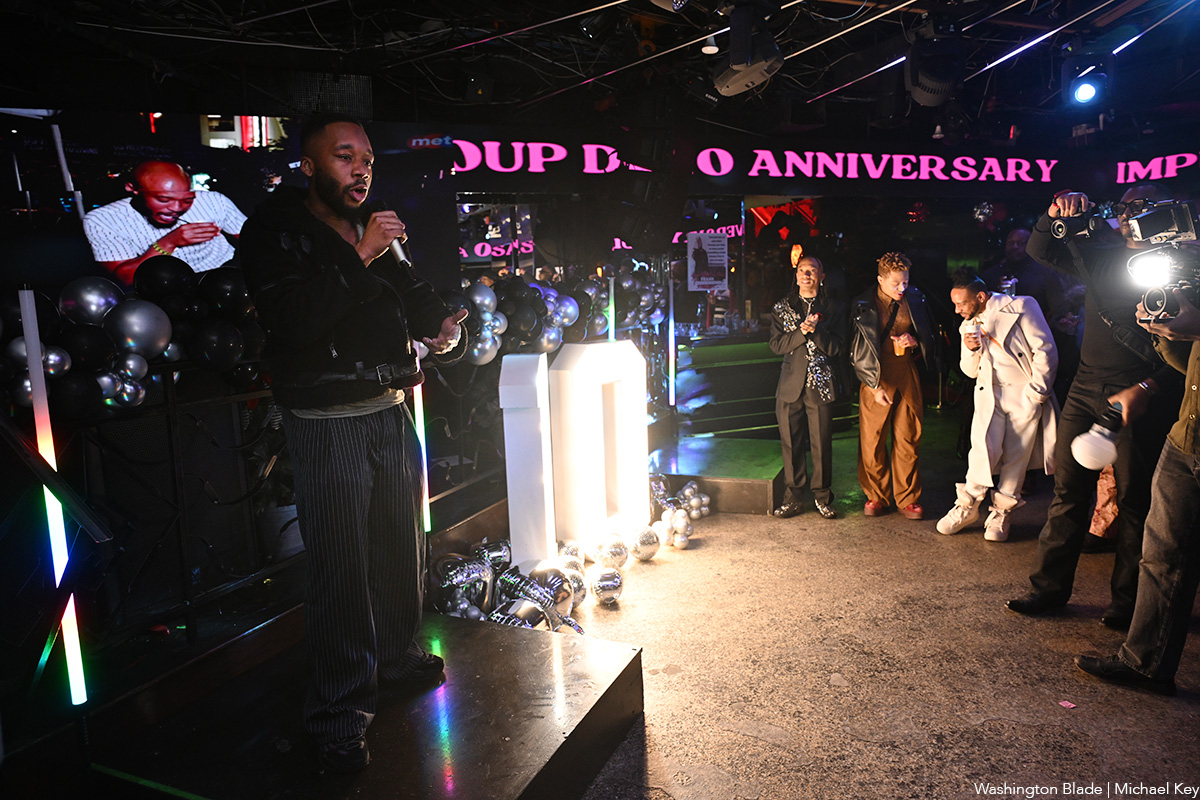
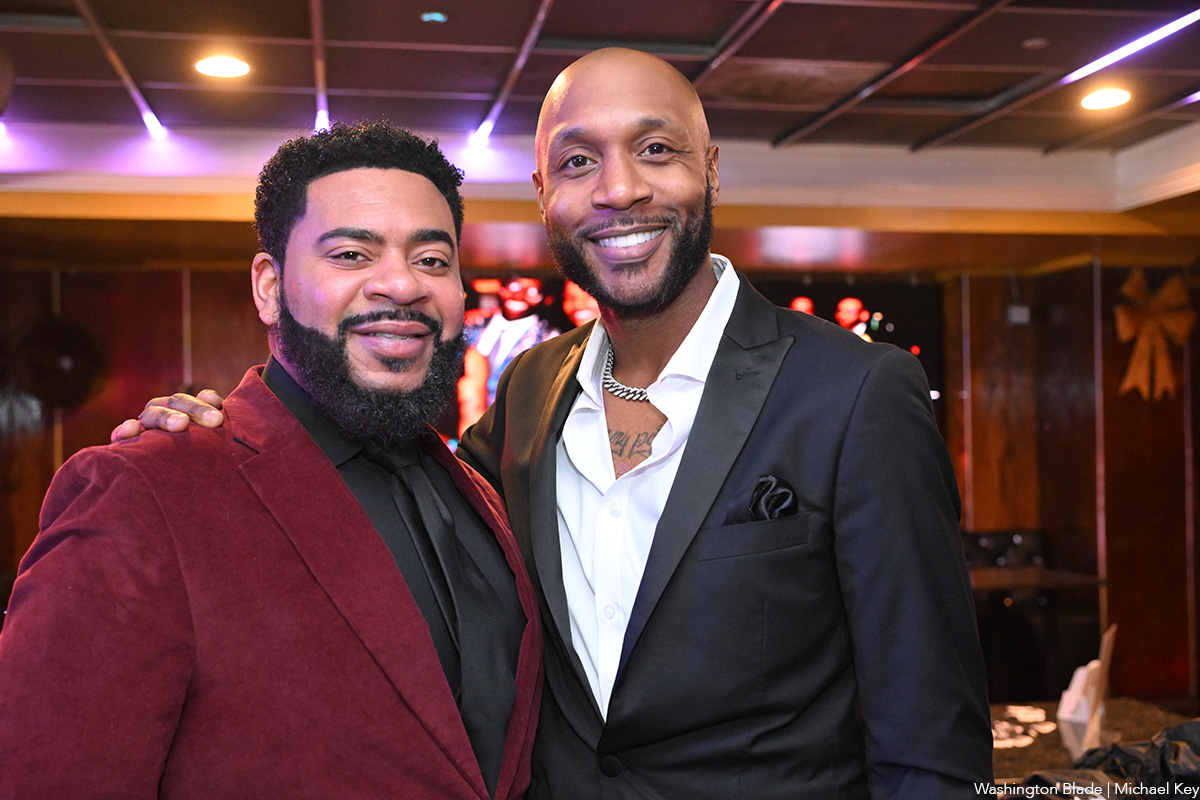
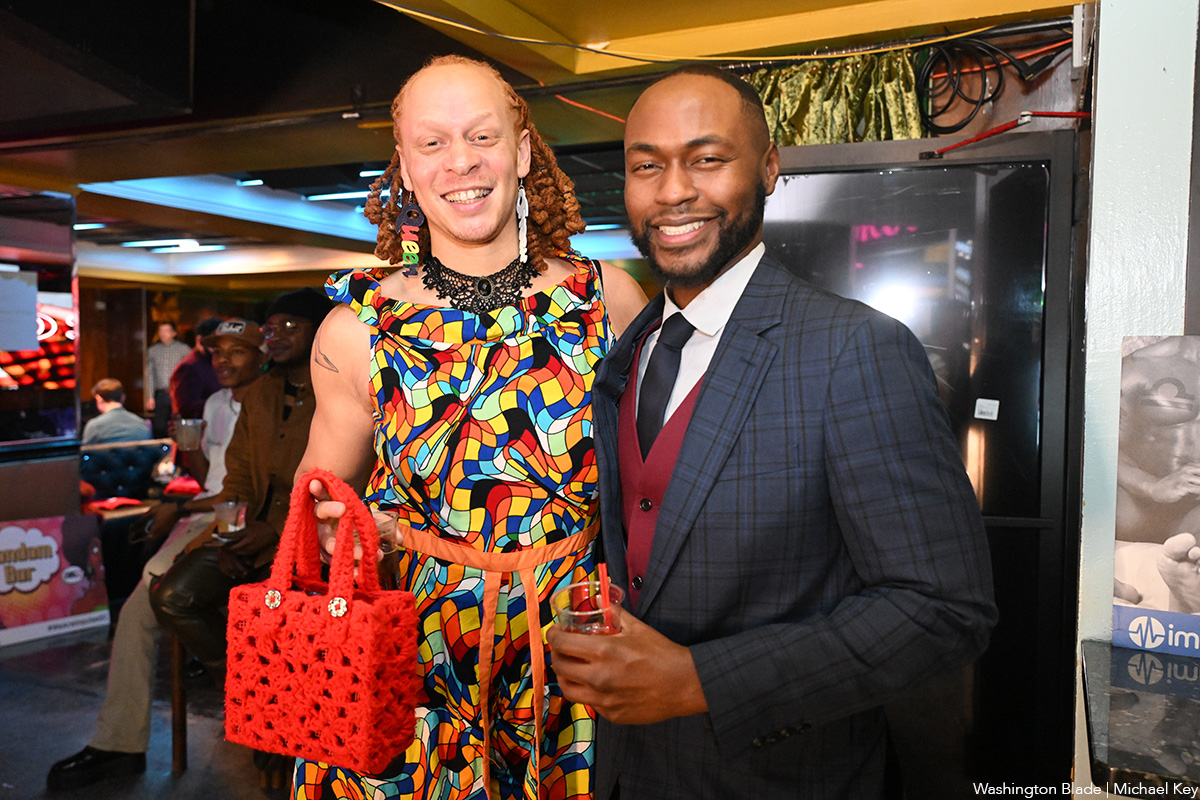
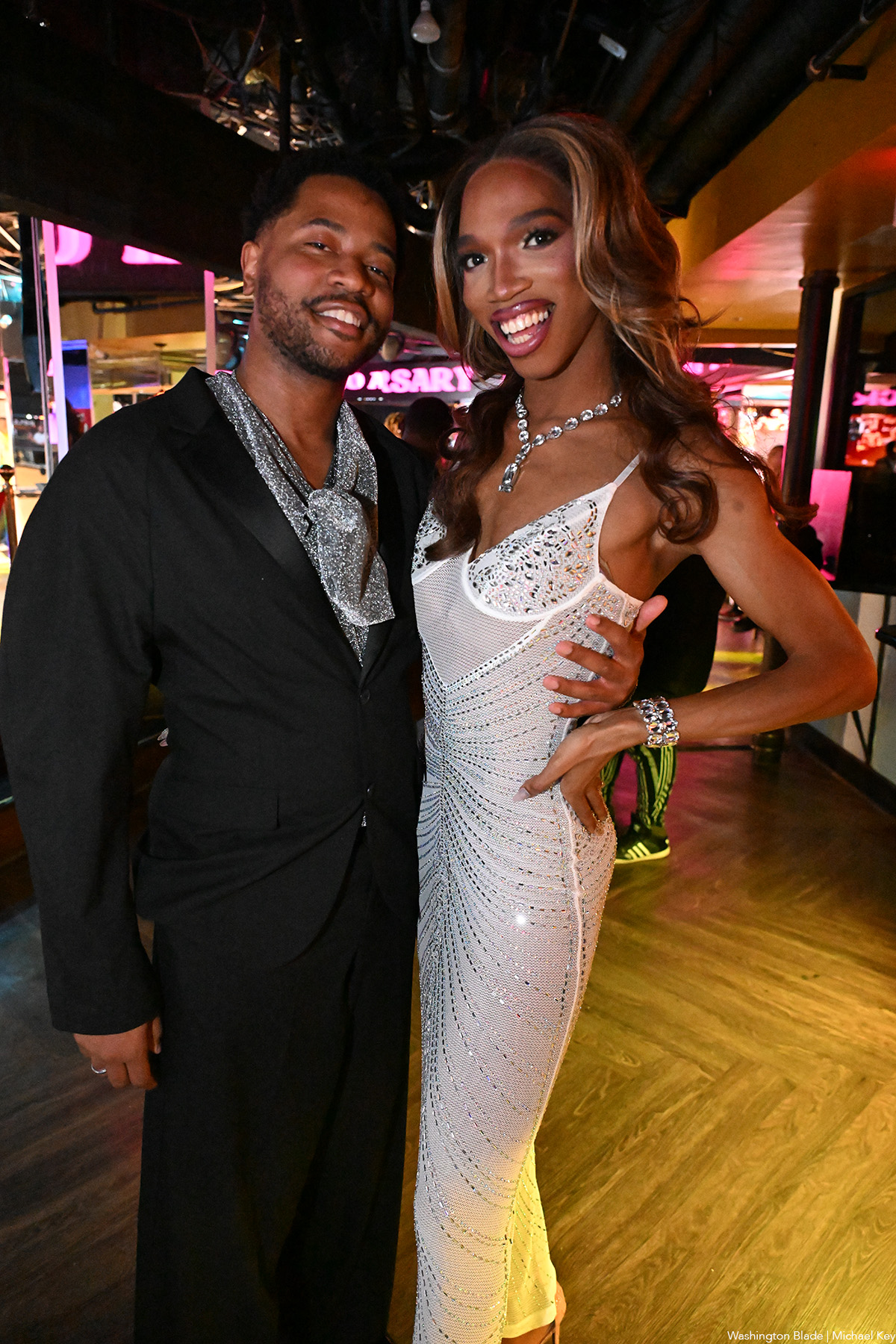
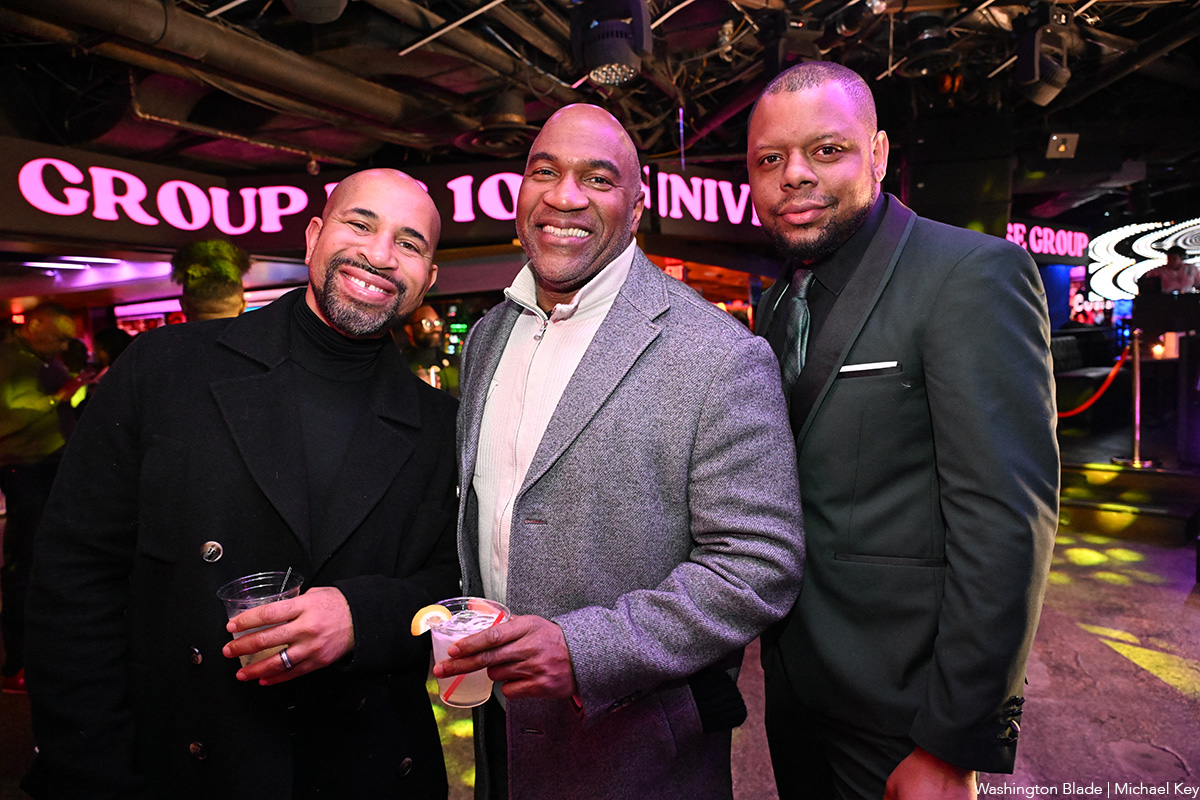
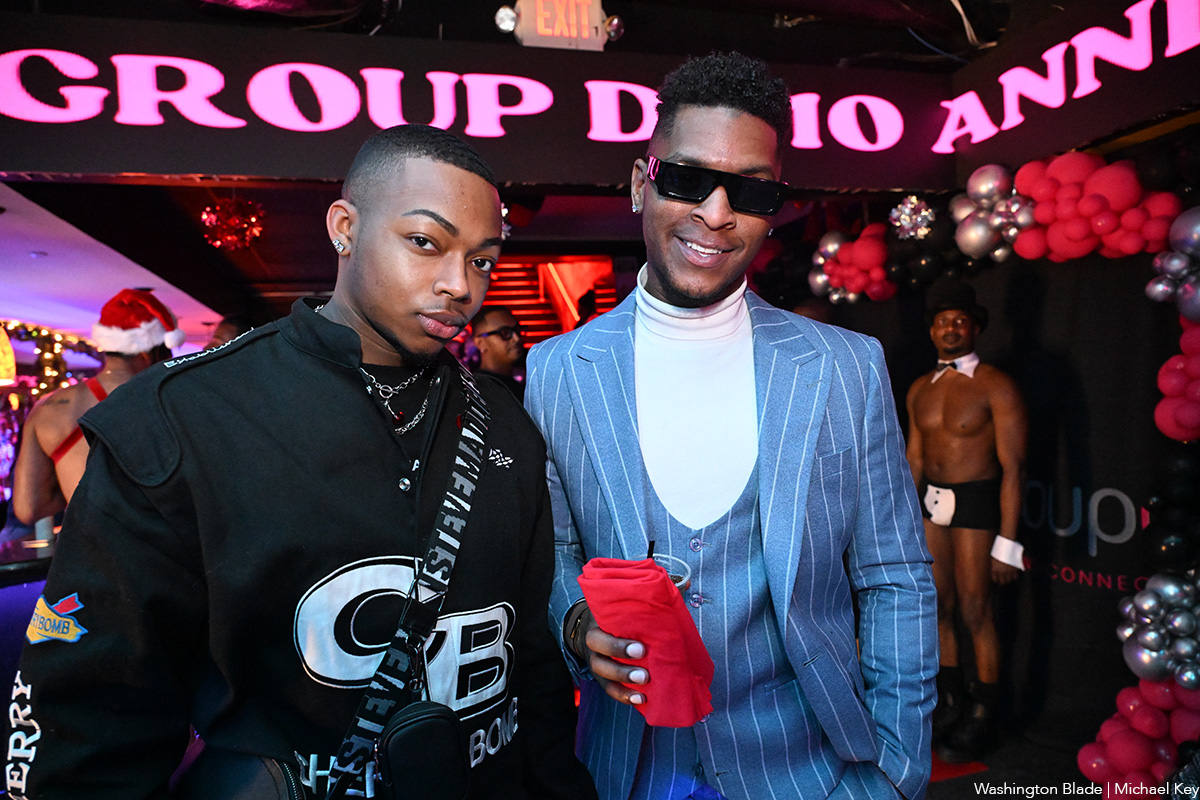
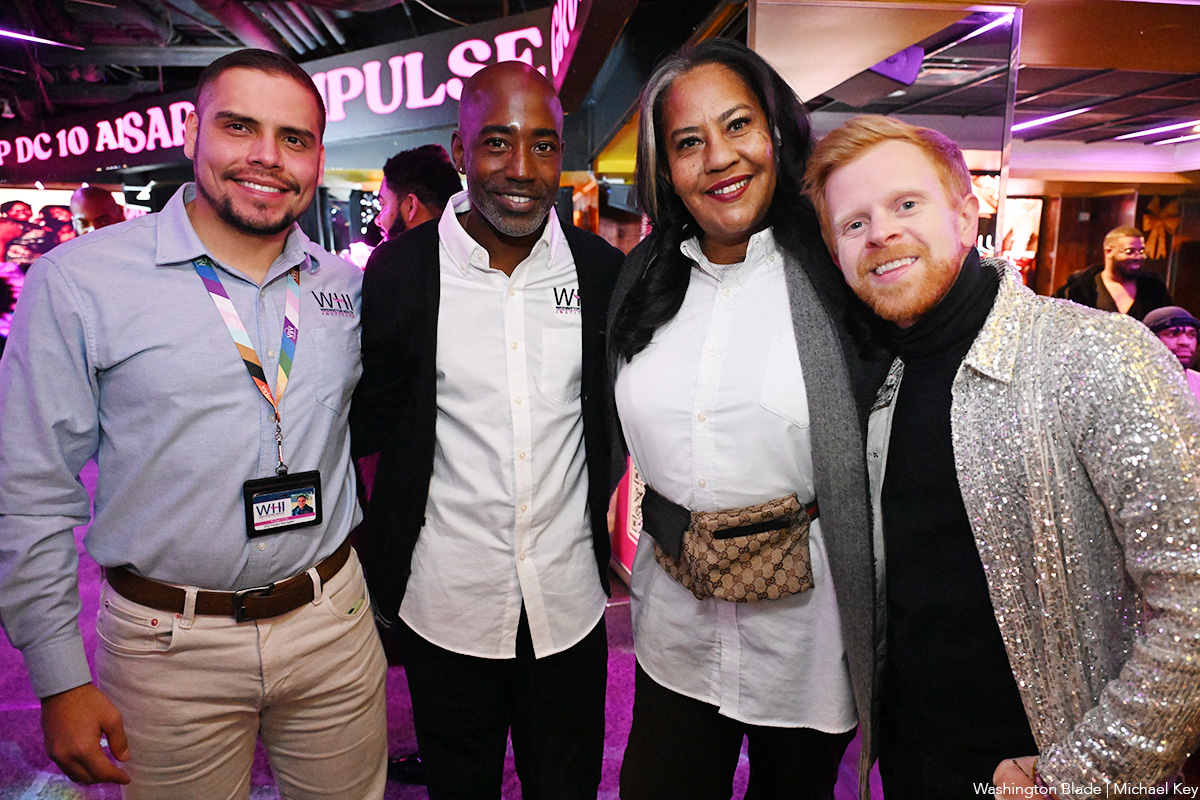

Rob Reiner, most known for directing untouchable classics like “The Princess Bride,” “Misery,” “When Harry Met Sally…,” and “Stand by Me,” died Dec. 14 alongside his wife, Michele Singer Reiner, in their Los Angeles residence. While investigations are actively underway, sources have told PEOPLE Magazine that the pair’s son, Nick Reiner, killed his parents and has been taken into custody.
Reiner was a master of every genre, from the romantic comedy to the psychological thriller to the coming-of-age buddy movie. But in addition to his renowned work that made him a household name, Reiner is also remembered as a true advocate for the LGBTQ community. In 2009, Reiner and his wife co-founded the American Foundation for Equal Rights, helping fight against California’s Prop 8 same-sex marriage ban. They were honored at the 2015 Human Rights Campaign Las Vegas Gala.
In a statement, HRC President Kelley Robinson said: “The entire HRC family is devastated by the loss of Rob and Michele Reiner. Rob is nothing short of a legend — his television shows and films are a part of our American history and will continue to bring joy to millions of people across the world. Yet for all his accomplishments in Hollywood, Rob and Michele will most be remembered for their gigantic hearts, and their fierce support for the causes they believed in — including LGBTQ+ equality. So many in our movement remember how Rob and Michele organized their peers, brought strategists and lawyers together, and helped power landmark Supreme Court decisions that made marriage equality the law of the land — and they remained committed to the cause until their final days. The world is a darker place this morning without Rob and Michele — may they rest in power.”
Reiner’s frequent collaborators have also spoken out as the industry is in mourning, including figures like Ron Howard and John Cusack.
A joint statement from Jamie Lee Curtis and Christopher Guest (who starred in Reiner’s “This is Spinal Tap”) reads: “Christopher and I are numb and sad and shocked about the violent, tragic deaths of our dear friends Rob and Michele Singer Reiner and our ONLY focus and care right now is for their children and immediate families and we will offer all support possible to help them. There will be plenty of time later to discuss the creative lives we shared and the great political and social impact they both had on the entertainment industry, early childhood development, the fight for gay marriage, and their global care for a world in crisis. We have lost great friends. Please give us time to grieve.”
While attending the 2019 HRC Los Angeles Dinner, Reiner spoke out about the need for equality: “We have to move past singling out transgender, LGBTQ, black, white, Jewish, Muslim, Latino. We have to get way past that and start accepting the idea that we’re all human beings. We’re all human beings, we all share the same planet, and we should all have the same rights, period. It’s no more complicated than that.”
-

 Politics2 days ago
Politics2 days agoLGBTQ Democrats say they’re ready to fight to win in 2026
-

 District of Columbia2 days ago
District of Columbia2 days agoBrian Footer suspends campaign for Ward 1 D.C. Council seat
-

 Chile4 days ago
Chile4 days agoFar-right José Antonio Kast elected Chile’s next president
-

 Opinions2 days ago
Opinions2 days agoLighting candles in a time of exhaustion




















